1.Types of Developers and Development Teams
In 2025 the qualified developers still being in high demand, companies are opening up to finding alternative,affordable, and talent-rich locations for remote hiring. With the advancement and updates in digital communication and project management tools, the option to hire developers remotely has increasingly become a strategic choice for companies. From Eastern Europe to South Asia and Latin America, there are several countries famous for having the perfect combination of technical expertise, price-worthiness, and good infrastructure. This ranking thus enlightens one on where to find the best hire remote developers in 2025 and explains what makes each region a smart choice for tech outsourcing.
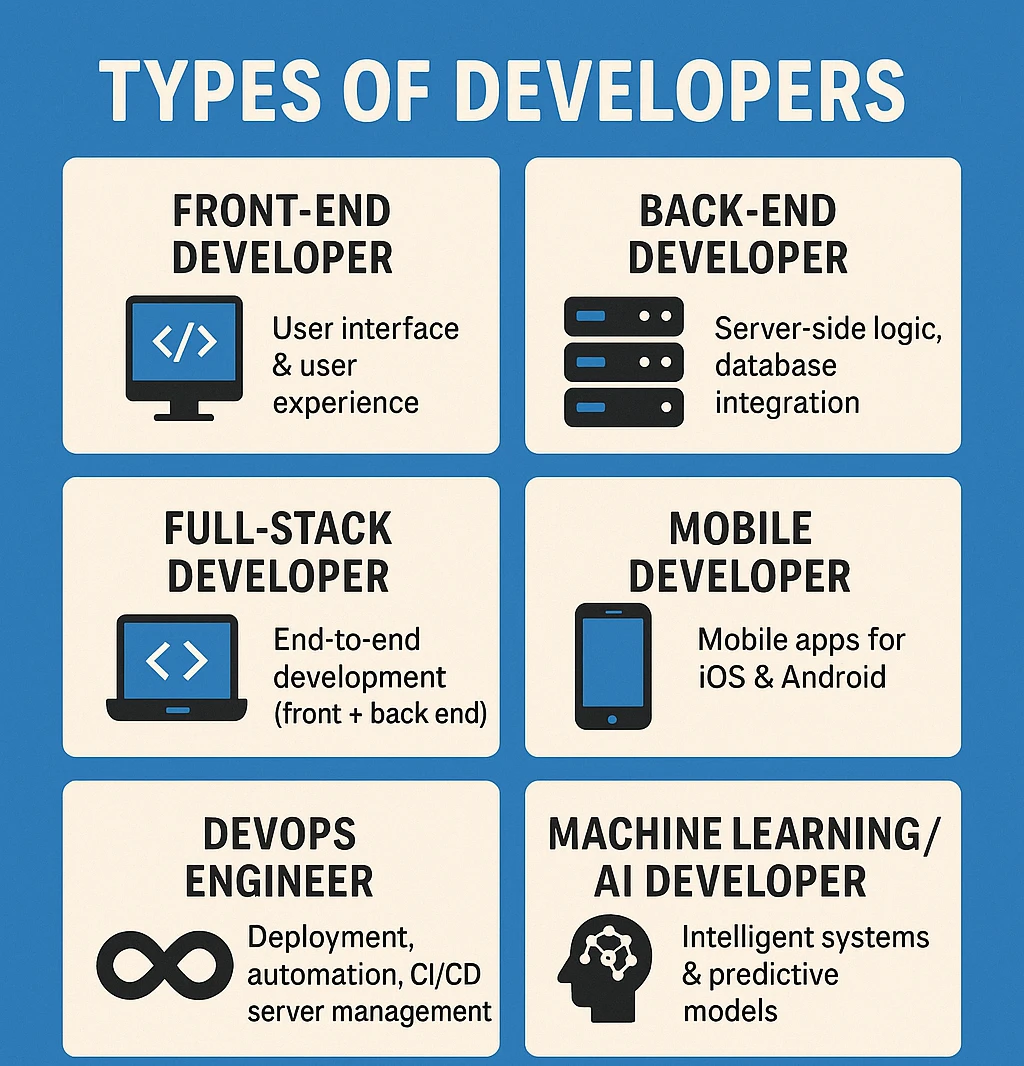
● Tools: JavaScript, React, Angular, Vue.js.
● Ideal for: Website UI, the landing page, web dashboards, mobile-first design.
● Tools: Node.js, Django, PHP, SQL, NoSQL.
● Ideal for: Business logic, server-side application, user authentication, databases management.
● Tools: React, Node, Linux.
● Ideal for startups and solo development of full-stack development.
● Platforms: Native, Flutter, React Native.
● Ideal for: business apps, games, mobile utilities.
● Tools: Kubernetes, Jenkins, Terraform.
● Best for: Cloud applications, microservices.
● Tools: Python, Scikit-learn.
● Best for: Predictive analytics, computer vision.
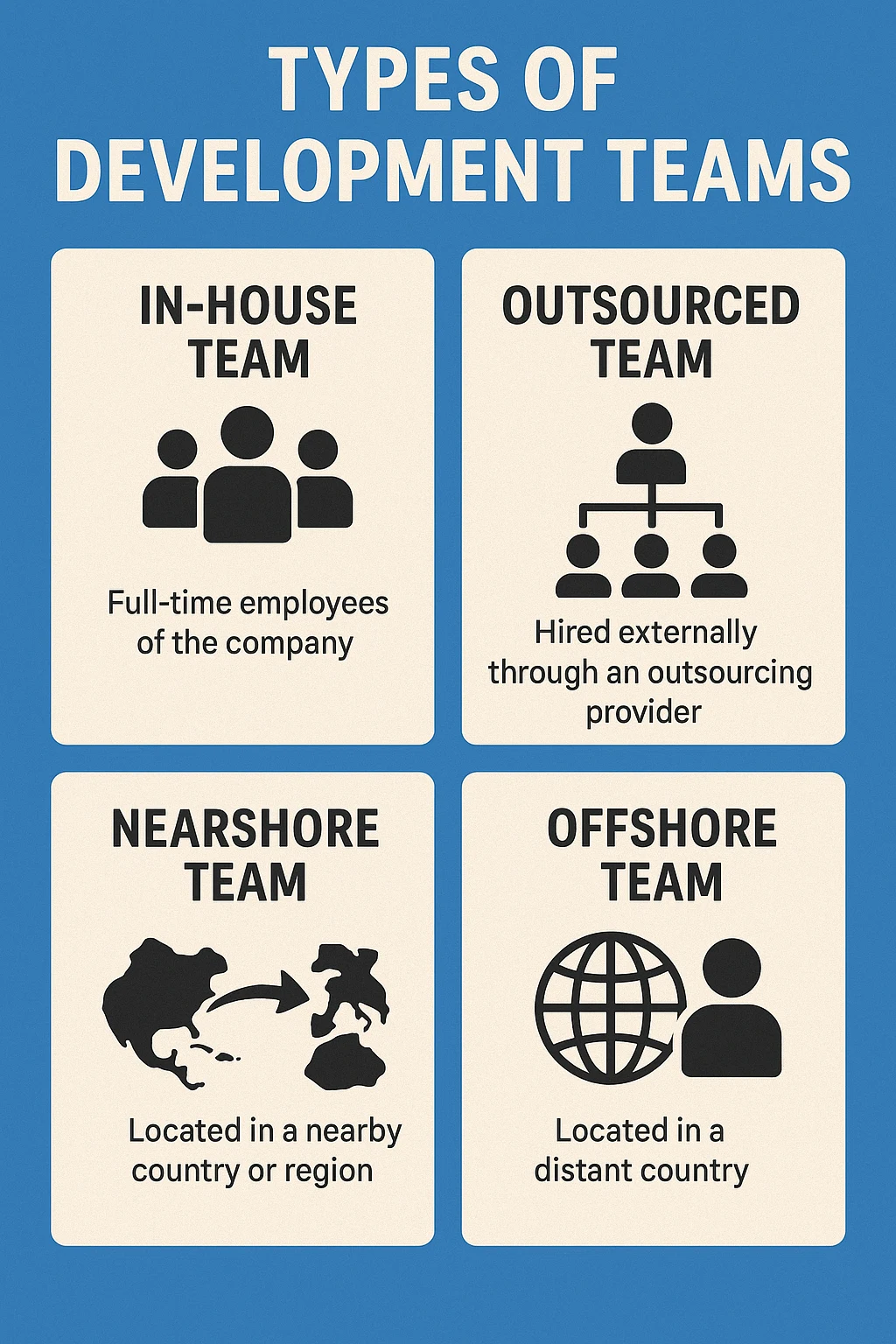
● Pros: Deep focus, long-term collaboration, aligned with your goals.
● Best for: Scaling startups, complex projects with continuous updates.
● Pros: Fast hiring, flexible skills, cost-efficient scaling.
● Best for: Short-term gaps or short-term boosters to an in-house team.
● Pros: Fixed cost, fast turnaround, focused delivery.
● Best for: One-time builds (MVPs, websites, modules).
● Pros: Full control, cultural alignment, better communication.
● Cons: Higher cost, longer hiring cycle.
● Best for: Long-term product development with sensitive IP.

Types of Developers
1. Front-End Developer
● What they do: Everything the users see and can interact with in a web application is developed by them. They also make sure the interface could be responsive, user-friendly, and matching the design.● Tools: JavaScript, React, Angular, Vue.js.
● Ideal for: Website UI, the landing page, web dashboards, mobile-first design.
2. Back-End Developer
● They're in charge of data, server logic, APIs, and system integration.● Tools: Node.js, Django, PHP, SQL, NoSQL.
● Ideal for: Business logic, server-side application, user authentication, databases management.
3. Full-Stack Developer
● What they do: It is a combination of the skills of the front-end and back-end developer. The whole project smoothly going from UI to the database could be handled.● Tools: React, Node, Linux.
● Ideal for startups and solo development of full-stack development.
4. Mobile App Developer
● What they do: They work on the application of smartphones.● Platforms: Native, Flutter, React Native.
● Ideal for: business apps, games, mobile utilities.
5. DevOps Engineering
● Work they do: It is development and operations working together for the efficiency of deployment, scaling, and infrastructure management.● Tools: Kubernetes, Jenkins, Terraform.
● Best for: Cloud applications, microservices.
6. Machine Learning/AI Developer
● Work they do: They analyze data and build intelligent systems that enable smart decision-making and make decisions wisely.● Tools: Python, Scikit-learn.
● Best for: Predictive analytics, computer vision.
Types of Development Team

1. Dedicated Development Team
● Structure: Full-time external group which works on projects.● Pros: Deep focus, long-term collaboration, aligned with your goals.
● Best for: Scaling startups, complex projects with continuous updates.
2. Extended Team (Staff Augmentation)
● Structure: The External team collaborate with the in-house team.● Pros: Fast hiring, flexible skills, cost-efficient scaling.
● Best for: Short-term gaps or short-term boosters to an in-house team.
3. Project-Based Team
● Structure: Hired for one specific project with a defined scope and timeline.● Pros: Fixed cost, fast turnaround, focused delivery.
● Best for: One-time builds (MVPs, websites, modules).
4. In-House Team
● Structure: Full-time employees working internally.● Pros: Full control, cultural alignment, better communication.
● Cons: Higher cost, longer hiring cycle.
● Best for: Long-term product development with sensitive IP.
2.Top countries for hiring remote developers
1. India
● Average Developer Salary: $8,000 – $20,000 per year● Time Zone: GMT+5:30 (Indian Standard Time)
● Technologies: JavaScript, Node.js, PHP.
● Official Languages: Hindi, English (widely used in business and IT)
India continues to be the largest offshore developer hiring destination in 2025 because of huge talent, cost-effective developers, and world-class English. India, with an extensive IT industry and universities to millions of graduates yearly, will provide developers with all major tech stacks at a highly proficient level.
2. Ukraine
● Average Developer Salary: $25,000 – $40,000 per year● Time Zone: GMT+2 (Eastern European Time)
● Technologies: React, Node.js.
● Official Language: Ukrainian (English widely used in IT)
Ukraine — A strong software development center with a lot of good experienced developers. Known for enterprise-grade solutions and experience in large-scale projects of enterprise-levels .
3. Poland
● Average Developer Salary: $25,000 – $45,000 per year● Time Zone: GMT+1 (Central European Time)
● Technologies: JavaScript, .NET
● Official Language: Polish (high English proficiency in tech sector)
Poland has excellent engineering education, thoroughly integrated English and a client culture that is very similar to western.
4. Philippines
● Average Developer Salary: $10,000 – $18,000 per year● Time Zone: GMT+8 (Philippine Standard Time)
● Technologies: Java, Python
● Official Languages: Filipino, English (widely spoken and used professionally)
Philippines aligns well with USA culture Many Filipino developers are hybrid software engineers and customer support, which makes them valuable to teams focused on the product.
5. Brazil
● Average Developer Salary: $15,000 – $30,000 per year● Time Zone: GMT-3 (Brasília Time)
● Technologies: Python, React.
● Official Language: Portuguese (English proficiency varies by region and role)
Near North America with Top destination for Brazilian companies.It is gaining & has a talented developer pool with great frontend and backend skills with developers. US time zones overlap making real-time collaboration possible.
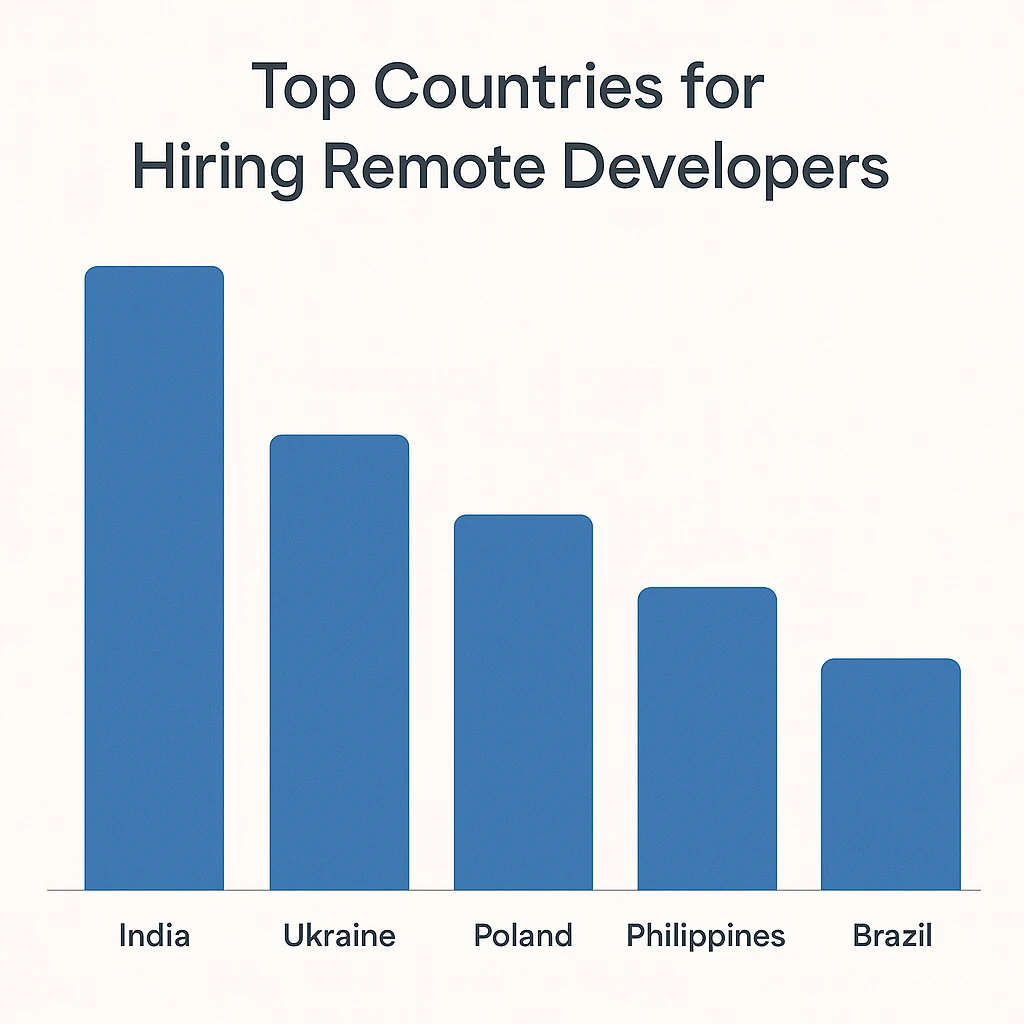
3.What factors make a country appealing for hiring remote developers?
Several key factors make a country appealing for hiring remote dedicated developers:
● Talent Availability: A number of high-quality candidates come out of countries with superior education systems.
● Cost-effectiveness: Second, competitive salary expectations in relation to Western markets have led certain countries to outsource or remote work, so some companies can be more budget-friendly.
● Bilingual English: Especially in finance and technology related to working together, knowing a thing or two about communicating more clearly can save misunderstandings.
● Time Zone Sync: Minimal to full working hours overlap in the candidate's time zone, which leads to communication, responsiveness, and task workflow.
● Skills and Experience — Countries with skilled tech, have experienced the change for international projects appreciate developers with broader knowledge, problem-solving capacity.
● Constant Work, Personality and Reliability: The employees are the backbone of business with work ethic right through to adaptable and culturally compatible professionals leads directly to higher output, long-term collaboration.
● Working in a Democratic Environment and IT Laws: Countries with stable political systems, IT regulations and secure data protection frameworks support the most secure, compliant working conditions for an expanding number of global clients.
● Access to Infrastructure and Connectivity: Access to good quality working internet, power and collaborative platforms is the key enabler of efficiency for distributed work.
● Talent Availability: A number of high-quality candidates come out of countries with superior education systems.
● Cost-effectiveness: Second, competitive salary expectations in relation to Western markets have led certain countries to outsource or remote work, so some companies can be more budget-friendly.
● Bilingual English: Especially in finance and technology related to working together, knowing a thing or two about communicating more clearly can save misunderstandings.
● Time Zone Sync: Minimal to full working hours overlap in the candidate's time zone, which leads to communication, responsiveness, and task workflow.
● Skills and Experience — Countries with skilled tech, have experienced the change for international projects appreciate developers with broader knowledge, problem-solving capacity.
● Constant Work, Personality and Reliability: The employees are the backbone of business with work ethic right through to adaptable and culturally compatible professionals leads directly to higher output, long-term collaboration.
● Working in a Democratic Environment and IT Laws: Countries with stable political systems, IT regulations and secure data protection frameworks support the most secure, compliant working conditions for an expanding number of global clients.
● Access to Infrastructure and Connectivity: Access to good quality working internet, power and collaborative platforms is the key enabler of efficiency for distributed work.
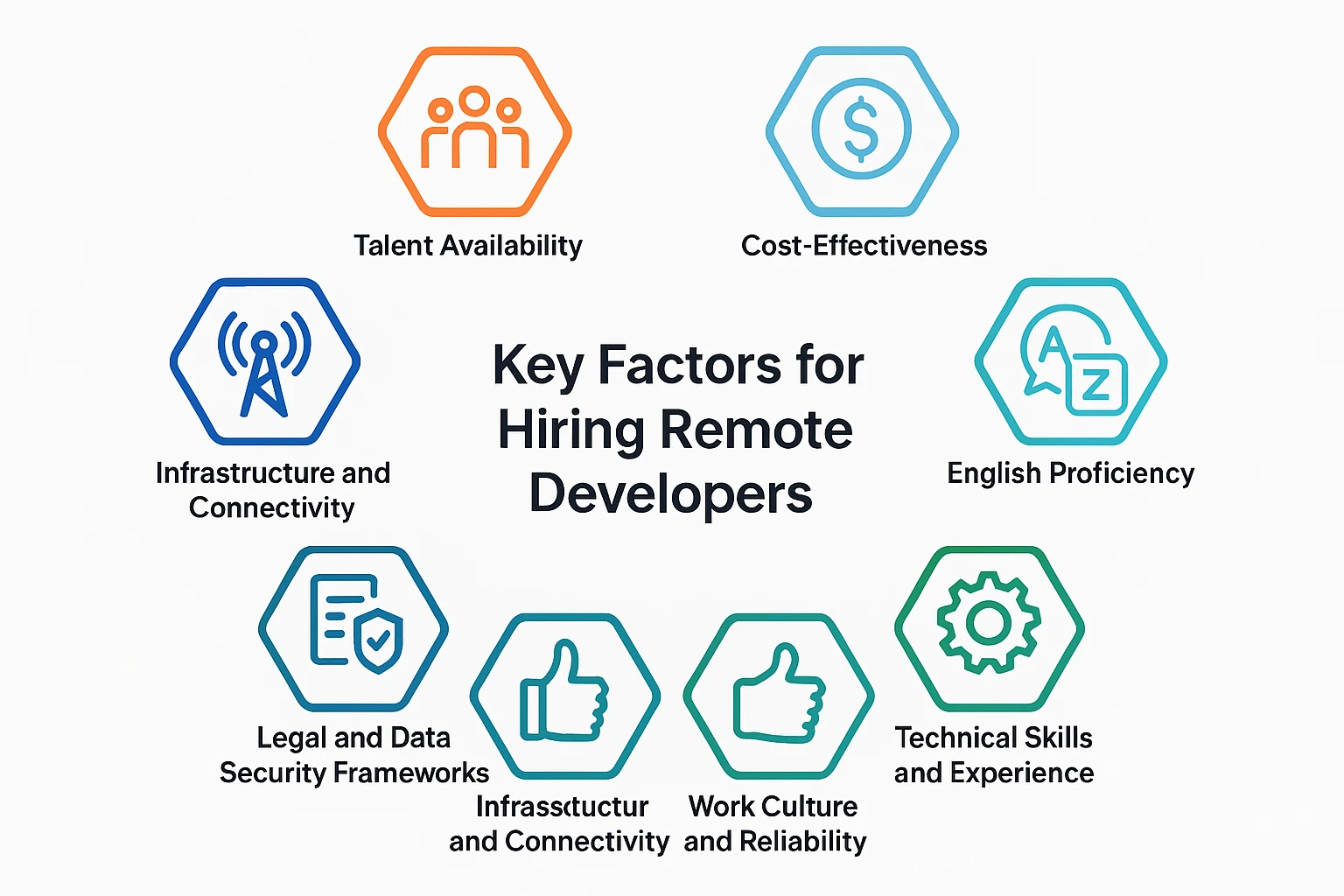
4.Choosing the Right Countries to Source Remote Developer Talent
● Economic Advantages
Select those with a low cost-to-performance ratio. When living costs are lower, developer salaries will probably be around the same rate.● Internet Connectivity
For stable remote work, you need a stable, high-speed internet. Countries with extensive broadband or fibre infrastructure mean robust communication, near-instant workflows,● Digital Infrastructure
Remote developer sustainable ecosystems exist, like the cloud services that access the strong digital ecosystem of countries, the modern tech hubs, and government support for IT to ensure the best remote work.● Lifestyle & Work-Life Balance
Countries offering better work-life balance retain top talent longer, reducing project disruption.● Remote Work and Visa
Explore which countries have digital visas or flexible remote work rules, which will be easier for developers to collaborate across borders as they gain more mobility and legal freedom.● Stability and Payment Processing of Currency
Consider geographies with relatively stable currencies and an established worldwide payment infrastructure to ease any financial risks, and reduce delays.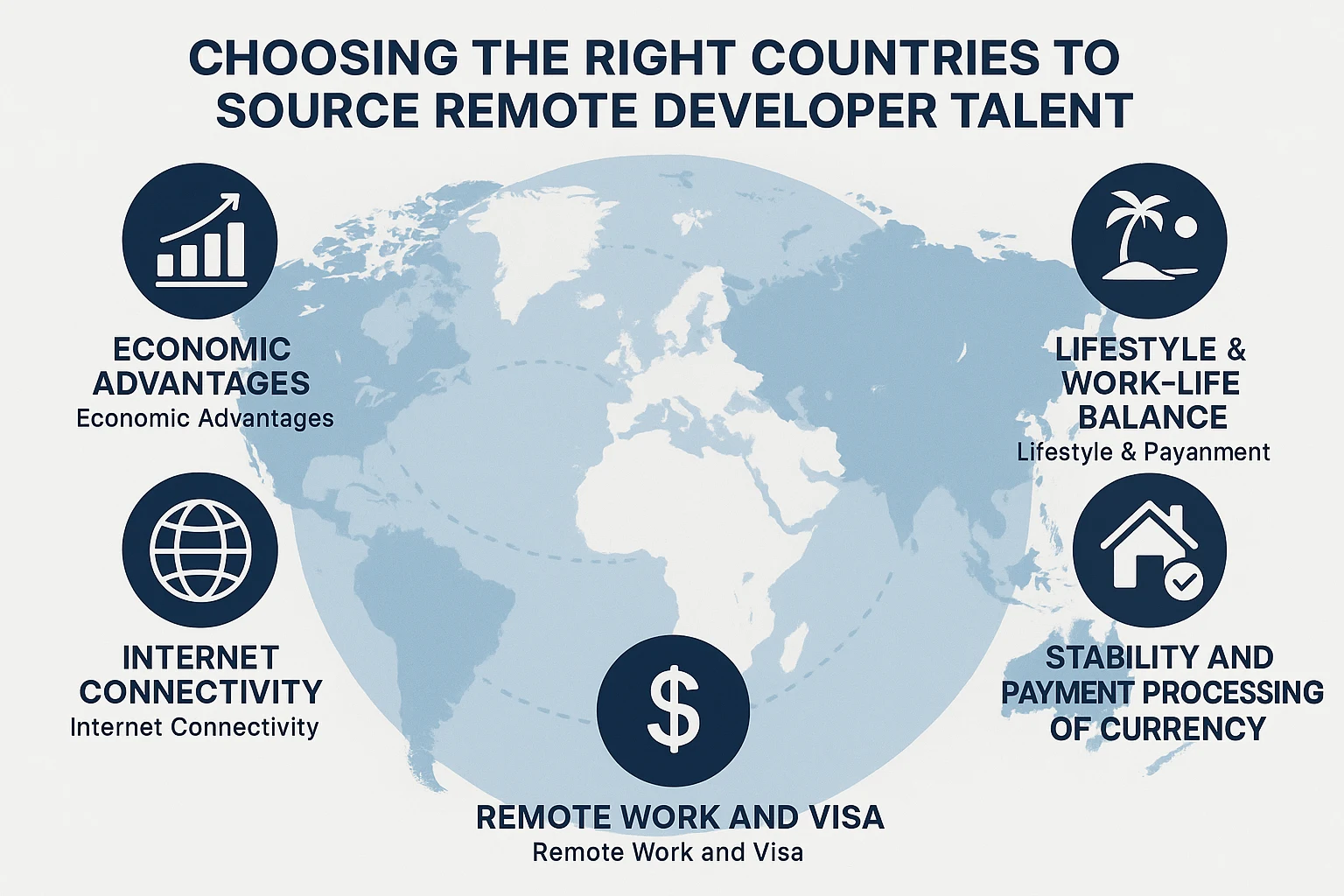
5.Remote Developer Onboarding: Contracts, Compliance & Legal Processes
1. Employment Classification
What is the employment classification of the remote developer : an employee, contractor or third-party agency. Misclassification in either country can result in legal and tax troubles.2. Adherence to Local Labor Standards
Learn what labor laws are in the country of the developer, how many hours you can work per day in their country, taking leave, resignation practices and benefits. In certain countries, employment protection laws can make terms and payments in contracts.3. Contractual agreements
Create a real contractual agreement that specifically states:● Scope of work
● Payment terms and currency
● Intellectual property rights
● Confidentiality and non-disclosure clauses
● Termination conditions
● Get legal advice to ensure that the contracts are enforceable in each of these jurisdictions.
4. Payroll & Withholding Obligations
Learn if your company will need to withhold income taxes or follow local tax laws in paying a remote employee. Usually, own taxes when it comes to independents, but that can change depending on local laws.5. IP Rights and Data Protection
Make sure a transfer of all intellectual property is physically defined as transfer to your company in the contract Include compliance with data protection regulations (e. g., GDPR, HIPAA), and attribution on data handling & storage responsibilities6. Paying Internationally
Utilize lawful payment platforms (example: Payoneer, Wise, Deel) that provide cross-border payments and fill your requisite tax forms such as the 1099 or substitutes for foreign vendors.7. Work Permits and Visas (If Applicable)
Confirm visa requirements, remote work visas or digital visa options by country for developers who are moving or simply working overseas during your time in the country.8. AML (Anti-Money Laundering), KYC Verification
For high-value contracts or fintech projects, compliance with AML and KYC may be essential.9. Recourse to Employer of Record (EOR) Services
For EOR, the companies can hire remote developers who are in compliance with the law, handling the compliance and payroll/benefits themselves in the developer's home country, and compromises legal risks.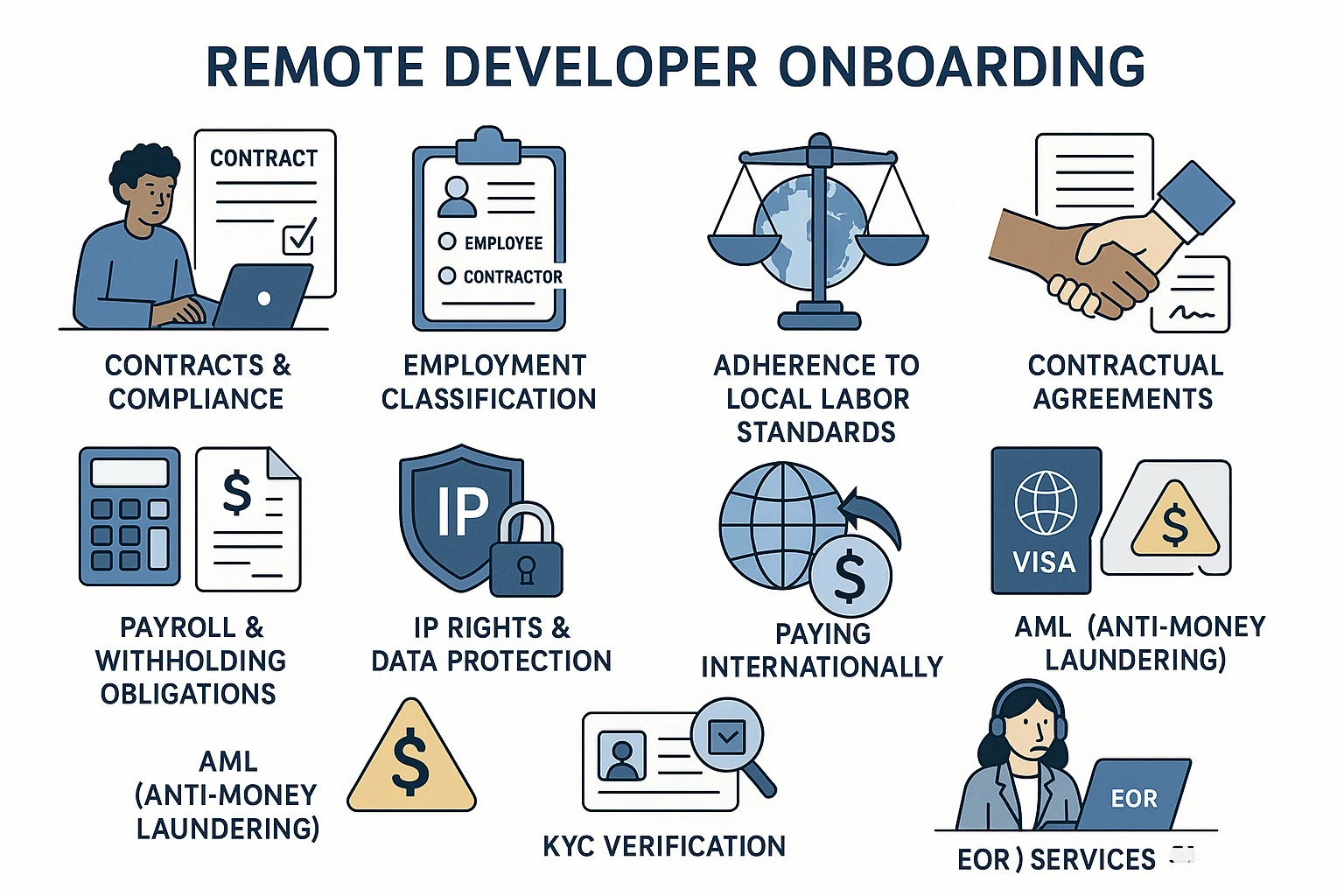
6. Conclusion
In 2025,hiring remote developers from the world’s talent hubs will be more workable than ever. A report concluded that countries such as India, Ukraine, Poland, the Philippines, and Brazil still have the edge due to strong technical education, value for money, and expanding IT environment. Whether you’re looking for cutting-edge innovation, cost-effective scalability or time zone alignment, there’s a country that can meet your development requirements. Identifying the strengths in each region allows companies to make better hiring decisions and construct nimble, diverse and highly-skilled distributed teams that fuel growth and innovation in a fiercely competitive digital world.

The Author
Karthikeyan
Co Founder, Rytsense Technologies